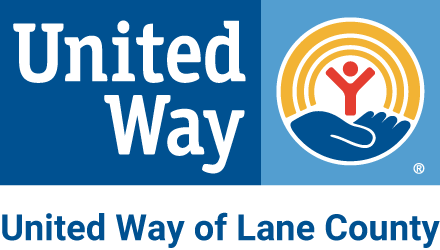New ALICE Report shows 47% of Lane County households are struggling financially
According to a new report from United Way and its research partner United For ALICE, 75,317 or 47% of Lane County households are struggling to make ends meet. This number is up from 46% from last year’s report, with nearly 2,000 more households in our community experiencing financial insecurity than last year.
Who is ALICE?
ALICE, a United Way acronym which stands for Asset Limited, Income Constrained, Employed, represents the growing number of individuals and families who are working, but are unable to afford the basic necessities of housing, food, child care, health care, and transportation. They are households that earn above the Federal Poverty Level and thus don’t qualify for government benefits, but make less than what’s needed to survive in the current economy. ALICE workers include child care providers, home health aides, retail clerks, and cashiers — those working low-wage jobs, with little or no savings, and usually just one emergency from poverty. ALICE workers are the backbone of our economy.
“My wife and I both work full time, and we have decent benefits. We're both lucky to make several dollars per hour more than minimum wage. And yet we still struggle. Rent, car payment, and utilities eat up so much of our pay that we have to be very careful about other purchases like food, gas, and clothing for our growing children. We changed our work schedules to remove our youngest child from daycare last year to make ends meet. We have almost no time together as a family. One thing going wrong - like a flat tire or having to fix a broken appliance - can set us back for months. We can never seem to save money, so we end up with no safety net. We work so hard, only to remain on the edge of not making it, all the time. We feel so discouraged.” - Rio Annsa, a Lane County parent
Understanding the State of Financial Hardship
Combining the number of ALICE households with households below the Federal Poverty Level paints a more accurate picture of the reality of financial hardship across our county, state, and nation. In Lane County, 24,047 households live below the poverty level and another 51,301 are defined as ALICE. Together, this shows us almost half of our community, 47%, are struggling.
This latest data latest data shows that these workers and families have been caught in the eye of an economic storm brought on by the pandemic. Wages have been on the rise – but so, too, have costs. And the assistance that was offered temporarily during the pandemic has waned.
“The pandemic remains an ongoing challenge for ALICE families. As the stimulus packages and enhanced tax credits expire, our neighbors are essentially being forced back to budgets similar to the post-Great Recession era, limiting their ability to succeed. We must move beyond survival and talk about what stability means for these families.”
The findings in this one-year period are consistent with a more than decade-long trend: Since the end of the Great Recession, despite some ups and downs, the number of ALICE households in Oregon has been steadily growing. From 2010 to 2022, the total number of households rose by 13%, households in poverty decreased by 6% — and the number of ALICE households increased by 34%.
“The data is showing persistent and widespread financial hardship — a red flag that the current system isn't working for ALICE,” said Stephanie Hoopes, Ph.D., United For ALICE National Director. “Current policy has not been enough to break down the barriers that trap ALICE households in financial hardship, from lack of access to housing and child care that’s affordable, to inadequate community supports such as broadband internet."
To read the ALICE in the Crosscurrents 2024 Update and access interactive dashboards that provide data on financial hardship at the state, county, and local levels, visit UnitedforALICE.org/Oregon.
If your organization is interested in learning more about ALICE, contact us about setting up a conversation or presentation to your organization.
United Way of Lane County is working to support families below the ALICE threshold. You can support this work by making a gift to United Way today.

